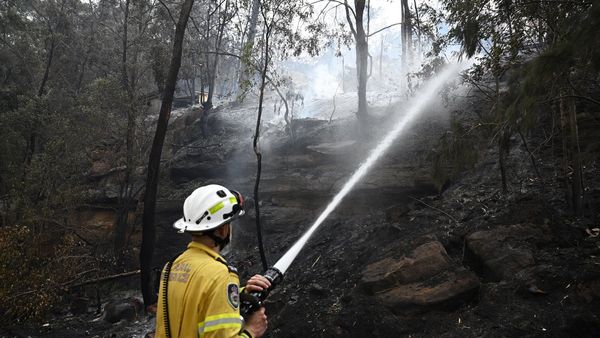An Indian Member of Parliament (MP) is said to represent 2.5 million citizens, on average. In comparison, a U.S. House of Representatives member typically represents approximately 7,00,000 citizens. Similarly, in Pakistan, a member of the National Assembly is a representative of approximately 6,00,000 citizens, while the ratio in Bangladesh is closer to approximately 5,00,000 citizens. In this year so far, India had around 4,126 Members of the Legislative Assembly, 543 Lok Sabha MPs and 245 Rajya Sabha MPs. There are far too few parliamentarians/Assembly members responsible for citizen welfare in India. Limited representation, in a democratic setup, seems to be our default preference.
While India does have innumerable grassroots politicians, 1,000-plus municipal councils/corporations with between 50 to 100 wards and approximately 2,38,000 panchayats (according to Press Information Bureau data) with between five to 30 members on average at the national/State level, there is a clear deficit in terms of their adequate representation in order to raise critical issues and enable law-making.
Meanwhile, our political system is riven with malapportionment, with legislative weight being skewed towards the citizens of select States. Unlike India, the United States has a political system that seeks to engender malapportionment, with each State given two senators in the U.S. Senate, enabling a block on legislation. Disproportionate allocation of power is encouraged. This is easier in a homogeneous country with a bi-party political system, where the same parties compete across all States. In India, with its heterogeneous political system across States, malapportionment can mean empowering select political outfits over others. With a sense of a different political culture in south and north-east India growing, one must tread carefully.
On delimitation
Delimitation could be a potential solution to restore proportionality — it has been utilised in the past. The Commission was set up four times in the past as an independent body, to enable redistricting. In 1976, during the Emergency, the number of Lok Sabha seats was frozen, with delimitation pushed out to 2001, citing ongoing family planning policies, with a push to avoid punishing select States with effective population control measures in place.
Delimitation may have resumed when States had reduced their fertility rates, enabling parity. In February 2002, the 84th Amendment Act of the Constitution was introduced, which froze the number of Lok Sabha seats until the first Census after 2026 (i.e., 2031). With the 2021 Census delayed (now likely to be conducted in 2024, with results potentially published by 2026), there is a window to conduct delimitation earlier. However, unleashing delimitation will have its consequences. Between 1971 and 2011, Rajasthan and Kerala, at 25 million and 21 million in population in 1971, respectively, have seen a widening to 68 million and 33 million, respectively. Similarly, in the 2019 elections, each MP from Uttar Pradesh represented approximately three million voters, while an MP from Lakshadweep represented about 55,000 voters. Assuming the number of parliamentary seats goes up to say 753 seats, States such as Tamil Nadu, Andhra Pradesh, Telangana and Kerala might see an increase in seats of about 6%, with Karnataka potentially seeing an 11% rise. Meanwhile, northern States such as Uttar Pradesh, Bihar, Madhya Pradesh, and Rajasthan would see their seats rise by 63%. Delimitation, in its historical form, would engender a bias towards a Hindi-speaking northern population while enabling select national parties to rise to power. States which have performed well in reducing their population growth, such as Tamil Nadu and Kerala, may be punished. Delimitation is inevitable, but its deleterious consequences can be minimised. First, the number of seats in Parliament needs to increase significantly (at least around 848 seats to avoid any State losing seats), helping to enhance democratic representation ratios. Delimitation should not be driven only by factors based on population. Geographical determinism, economic productivity, linguistic history, and a sense of fairness should also play a part. In simpler terms, Sikkim’s voice must also be heard in Parliament even if Bihar has a greater population. The fiscal impact of delimitation on future transfers to States will also need to be rethought.
Promoting federalism
Beyond this, our electoral system must be reformed. Federalism needs to be promoted (past decades of centralisation that have impacted Centre-State relations), and we need to give States a better voice and a platform to represent their interests.
The Rajya Sabha can play this role; however, it is currently elected by State legislatures, giving disproportionately more representation to larger/more populous States. Constitutional reform can be pursued to give each state the same number of Rajya Sabha MPs. At the same time, direct elections for Rajya Sabha MPs should be promoted while ensuring that a domicile requirement is added and stringently adhered to.
Proportional representation can also be considered, especially for the Lok Sabha and State Assembly elections. In Australia, lower-house elections have voters rank candidates on an alternative preference ballot — if a candidate does not win a majority of votes in the first round, the weakest candidate is eliminated, with their votes redistributed to the next preferred candidate. This goes on until there is a clear majority behind a candidate. In France, a double ballot system is conducted for National Assembly elections; if no candidate wins in the first round, the second round sees only candidates with over 1/8th of total votes in the prior round competing. India’s first-past-the-post system may ensure quicker election results. But still, it does ensure that a legislator often represents a constituency without a majority of votes.
Having more States
We need more States as well. The largest State (highest resident population) in the United States, California, has a population of just 39 million, with the average State having a population of about five to six million. Around 22 Indian States/Union Territories have a population higher than that. The States Reorganisation Commission was set up in 1953, creating nearly 14 linguistic States and six Union Territories. There is potential for India to have more States (moving up from 29 to say 50 or even 75 States); for example, a State such as Uttar Pradesh, is simply too big to be governed well as a single unit. A concern about North Indian or large States dominating the polity would be alleviated if we had more and smaller-sized States. A New State Reorganisation Commission may be set up after the next election to evaluate the socio-economic and administrative viability of select to-be States (for example, Bundelkhand, Gorkhaland, Jammu, Karu Nadu, Kongu Nadu, Mithila, Saurashtra, Tulu Nadu and Vidarbha). We have enough linguistic States — States must be split up/redesigned to enhance administrative efficiency and democratic accountability.
India has 8,000-plus urban settlements, but the number of mayors remains in the low hundreds. Every Census town may have a fixed-tenure mayor elected in direct elections. Direct elections could enhance democratic representation while improving efficiency in urban governance. Such mayors must also be empowered, with decision-making ability over 18 critical functions — for example, urban planning, water supply, fire, land use regulations and slum improvement), as outlined by the Constitution (74th Amendment) Act. Select States such as Bihar and Rajasthan) must be pushed to loosen their grip on city-level authorities/functions.
Enhancing local democratic representation will help strengthen India’s democracy. Such measures might help alleviate the concerns of citizens in varied parts of India and to enhance its democracy. Any child from the northeast or south of India could aspire to become a Prime Minister. One hopes our policymakers have the wisdom to ensure a just electoral system.
Feroze Varun Gandhi is a Member of Parliament, representing the Pilibhit constituency for the Bharatiya Janata Party







